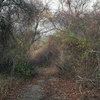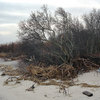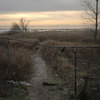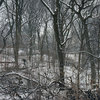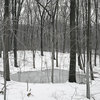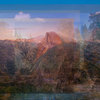A Conversation with CPC 2010 Winner Dalton Rooney
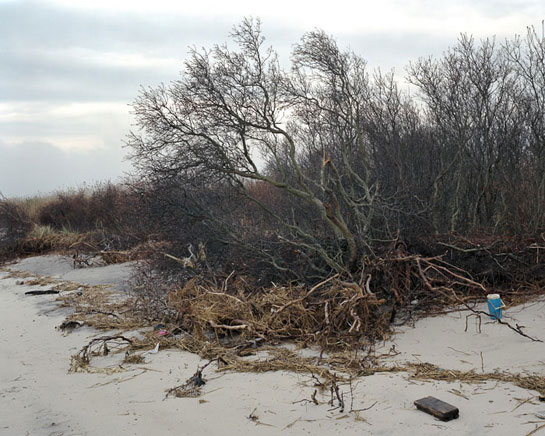
Dalton Rooney is one of the winners of this year’s Conscientious Portfolio Competition. As I wrote earlier, what struck me about Outer Lands is how engaging these landscapes are if you spend time with them. Seemingly simple, they are deeper than they seem; seemingly messy, with their tangle of branches, they are clear and beautiful. They offer space for contemplation, without pushing an obvious message. Outer Lands shows the contemporary landscape - with various human traces - photographed most beautifully in a contemporary way. In the following, I am talking with Dalton about his work. (more)
Jörg Colberg: Outer Lands clearly is contemporary landscape photography, and I’m curious to learn a little more about its background. Why this particular area? What motivated your photographic approach?
Dalton Rooney: My interest in this landscape actually predates my involvement with photography. I think I first noticed the wetlands at the far end of Brooklyn on my way to the airport. It was one of those places you drive through to get somewhere else, but I thought it was beautiful, and a little wild. Whenever I felt cooped up by the city I would go out there and walk for hours, going a little farther each time. Somewhere along the way I picked up a camera and began documenting what I found, and eventually the photography became the primary reason for my excursions rather than the other way around.
Many of the ideas that make up the series have been around since those early walks, but I had trouble clarifying and organizing them. I think it took a long time for me to find a clear voice in my pictures, and I experimented with a lot of different styles and techniques over the years. It was a struggle to pin down exactly what it was about the landscape that I found so interesting, and to capture that in a way that I felt was honest.
One of the turning points for me was found in the work of other photographers—specifically Joel Sternfeld’s Oxbow Archive, and Jem Southam’s Painter’s Pool. I discovered both of these works around the same time, in 2008, and they affected me deeply. There was something in those pictures that I strongly identified with, and I suddenly felt like I had a new way to look at and describe the landscape.
I had been experimenting with a large format camera before that time, and occasionally worked in color, but I think the formal qualities that I found so engaging in both those bodies of work really cemented my resolve to commit to that medium. It was a difficult adjustment, but there is something about working with a large format camera that really suits my photographic way of thinking, and I think the visual qualities of the medium complement the work.
I’ve been working on the project in its current form for about a year and a half, and I feel like I could continue to explore this particular landscape for many, many years to come. I do expect my ideas about the project to develop and and change over time, so it’s exciting for me to think about the possibilities for what’s to come.
JC: Do you think you can elaborate a little on what you mean when you say “there is something about working with a large format camera that really suits my photographic way of thinking”? What is it that makes such a camera more than just a camera that will produce a large negative? How does it relate to your photographic thinking?
DR: Well, using a large format camera is a slower, more methodical way to work than with a pocket camera or even medium format. I know that probably drives some people crazy, but for me it’s a benefit rather than a drawback. A field camera is a very economical device - there are no electronics to fiddle with, no zoom lenses, and I am limited to how much film I can carry. I find that those limitations actually help me focus my attention in a way I can’t with an SLR — I feel more deeply involved in the process of image-making.
I read Eugen Herrigel’s Zen In The Art of Archery last year, and it changed how I think about the tools I use. One of the lessons I took away from that book is that technical proficiency is tied to intimate familiarity with your tools. Technical proficiency is important because it allows you to think less about the technical aspects of what you’re doing and just get on with actually doing it.
This all sounds kind of obvious in retrospect, but it can be hard to suppress the desire to constantly be fidgeting with equipment. The mechanical nature of the camera inspires intimate familiarity, in my experience. My proficiency has finally gotten to the point where the equipment fades away while I’m working, and I am simply making pictures.
JC: As a landscape photographer, you’re stuck in this weird place between all those photographers who produce gorgeous photographs (think National Geographic) and those photographers for whom the landscape is just some sort of stage to produce statements about something that might not have much to do with the landscape itself.The former usually is mostly just decorative (“look, how beautiful!”), whereas the latter often ends up being mostly declarative (“pollution is terrible!”). It seems to me that in both cases the essence of what a landscape can do if you allow yourself to be exposed to it is lost - the feeling of immersion in something larger that, while being tremendously awe inspiring ultimately also is very subtle. How do you navigate between those two poles? Maybe this isn’t even something you’re not too worried about?
DR: I think you’ve very accurately described my dilemma! I’ve seen a lot of that work too, and the genre can feel stifling at times. In my mind an accurate portrayal of the landscape requires both of those elements, because they are both true to some extent, but they’re often used in such a blatant and one-sided way. Subtlety is tremendously important to me, both in photographic style and in message. I try to leave room in my pictures for people to form their own connections and opinions rather than dictating a response.
JC: I just have to ask: What is “an accurate portrayal” of a landscape?
DR: I guess what I mean by that is that the landscape I have chosen to work in is a complex place. Jamaica Bay is a good example of this: it’s an area of tremendous natural beauty that has also borne the brunt of centuries of urban activity. Both of these conditions are interesting to me, they are both integral elements of the world we live in. And then there’s everything in between those extremes, the more prosaic details of the landscape, which are often overlooked. An accurate portrayal of the landscape should capture and communicate some of that complexity without editorializing too much, I think.
JC: In a recent post on your blog you talked about some work that is more experimental. I was struck by how well most of it turned out. Experimentation seems to be very important to you?
DR: Yes, experimentation is something that comes very naturally to me. I spoke earlier of inspiration; I do keep my eyes open to all kinds of work that is out there, not just limited to photography. So sometimes an experiment is just a way to capture that fleeting feeling of inspiration I get from seeing something new, which would never make sense in my regular work. Most of these little side projects don’t really go anywhere (and I don’t even publish all of them to my blog), but occasionally something comes out better than I anticipated.
This summer was pretty fertile in terms of trying out new ideas, and I do think that some of those ideas will make their way into my main body of work in some way. And I will probably pick up on several of those projects again in the future.
JC: Experimentation can be tricky, though, can’t it? After all, we have come to expect photographers to have what you could call their “signature style,” and something that doesn’t look like that at all might confuse people. I have the feeling you’ll disagree, and I’d like to know why.
DR: It can certainly feel that way sometimes when I look at the contemporary art market. But on the other hand, Sternfeld, Shore, and Misrach are all out there making work with pocket digital cameras! I think it’s exciting when an artist tries something a little different, outside of their comfort zone, even if the results aren’t directly comparable to what came before it. I’m sure it can be very difficult to break away from expectations once you become established in the market. I admire photographers that handle that pressure well, and continue to take risks with their work.
JC: I quite like In the age of mechanical reproduction.This seems so far from your landscape photography, and I’m curious to learn whether for you, this is just something very separate or whether there are underlying common ideas about photography that spawned both Outer Lands and In the age of mechanical reproduction?
DR: Thanks! Yeah, I do see a connection in the ideas between those two projects, even if they are completely different in execution. I mentioned earlier that subtlety is very important to me, and it’s something I find lacking in much landscape photography. Outer Lands is a straightforward response to that, an embodiment of what I find valuable in the landscape. The composites approach the problem from a different angle; they are a criticism of the conventions of the genre through the magnification of what I find so wrong about it.
It was also important to me that the results were visually interesting—they borrow images we’ve seen so many times and turn them around a bit. I think that was one of my more successful side projects from this year and there’s room for more work there.
 By
By 